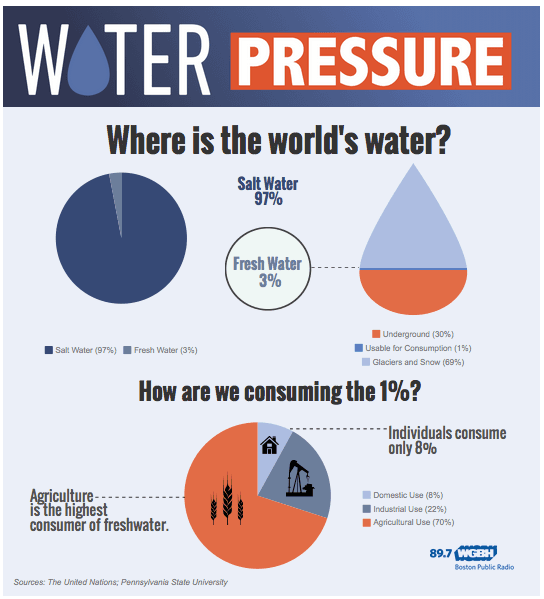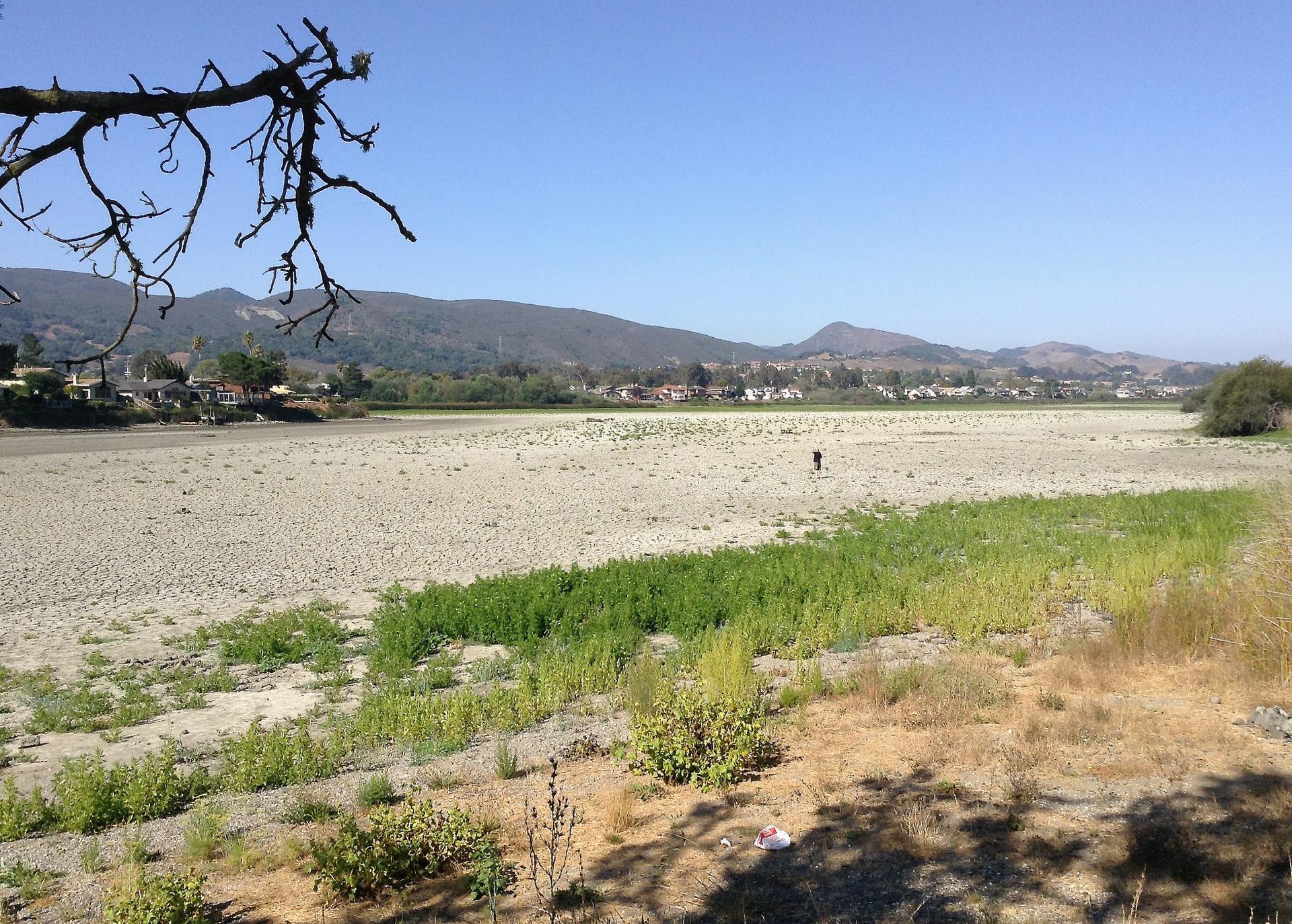The reason New England was snowed under — and California went dry
Laguna Lake in San Luis Obispo, Calif.
Casey McElheney, a San Francisco firefighter, has a cabin up in the Sierra Nevada Mountains, in eastern California. We hiked up to a summit there last month.
"I think I see a little snow,” I told him.
"There’s hardly anything there," McElheney said. "And usually everywhere around here, it’d be white."
Water used to come here every year. These peaks usually get about 32 feet. The snow melts for months into rivers, lakes, and reservoirs that supply a third of California’s water. Around here, people saw the snow as a dependable friend. This year though, water just didn’t show up.
"Basically, the storms that we should’ve had in California ended up whacking New England,” said Chris Field, who founded the Carnegie Institution’s department of Global Ecology at Stanford University. He says scientists haven’t completely figured out why water rejected California in favor of the northeast. This is what they’ve come up with so far:
“The storms that were headed for California basically bounced off this mountain of high-pressure air over the north Pacific, and they landed in the eastern US and especially over New England,” Field said.
Field says water will continue to favor New England. And that might be fine for a while. But he says eventually the relationship will turn … unhealthy.
“What happens in a warmer climate is that the areas that are already dry have a tendency to get drier," he said. "The areas that are already wet have a tendency to get even wetter."
When water shows up in New England, it’ll be everywhere — an overwhelming deluge of rain and snow. That’s because as the earth heats up, more water evaporates and collects in clouds that dump it all at once.
"If I look at the key risks for New England going forward, based on the most recent climate change projections, I think risks from heavy rainfall — especially rainfall associated with hurricanes — profound risks," Field said. "Risks of summertime high temperatures, especially when the humidity’s high. And then extended droughts."
The new relationship has already taken a toll. Infrastructure can’t handle the extremes. New Englanders were almost envious when they heard about California’s drought. "It’s too bad we can’t give them the snow from here," they said. So is there any way different areas of the country can help each other as they’re seeing opposite extremes? I put this question to civil and environmental engineer Dick Luthy, director of the Engineer Research Center for Urban Water Infrastructure at Stanford.
“These discussions come up from time to time, about, 'Could you take water from the Great Lakes and take it to Denver?' something like that," Luthy said. "This wholesale movement of water over long distance like that, it just won’t work. It takes a lot of energy to pump water. Let alone, there would be the opposition in some places to take water.”
Luthy advises adapting to our new relationship with water, because, he says, water isn’t going to change. So we have to.
And that’s what Californians are doing. Luthy took me to a neighborhood near Stanford.
Californians who aren’t farmers can get over their need for so much water in simple ways, Luthy says — they were using most of it for their lawns anyway.
“And this person who lives here, who happens to be me, you see there’s no grass," he said. "There’s wood chips, a fig tree, a citrus. They’re plants that don’t require intensive watering.”

It probably won’t be as simple for people in the Northeast to adapt. New England is facing a future with more water than it can handle. It has to find somewhere for those floodwaters to go.
Like the alley between the Boston Architectural College’s buildings in Boston’s Back Bay neighborhood. Arthur Byers, the college's vice president of facilities, points to the tan-colored bricks on the ground. They’re special, and not just because they look different.
"They’re not the typical red brick you see through the Back Bay," Byers said.
These bricks are porous. Water seeps into them and heads downward, through layers of sand and gravel that clean it, and into a big tank that leaks it out slowly. Faculty member Shaun O’Rourke tells me that eventually, the water makes its way to the Charles River.
"So say we have a big rain event, right? All the water can’t go down immediately," he said. "We need to hold it somewhere so the water can infiltrate slower. And that water can be held and released when it’s able."
Byers takes out a green garden hose, turns it on full, and I watch as the water seems to disappear.
All this cost $3 million. It took more than a year for the city to approve, and another eight months to construct. So it wasn’t convenient for anyone, but it works. And when it rains, water’s allowed to be itself and follow its natural path. More alleys like this one might make the difference between a pleasant visit from water and a destructive one. After all, good relationships take work.
A version of this story first appeared on WGBHNews.org. To explore the simple yet vast subject of water, WGBH News has partnered on a multi-part series with the American Academy of Arts and Sciences. You can find the entire series here.
